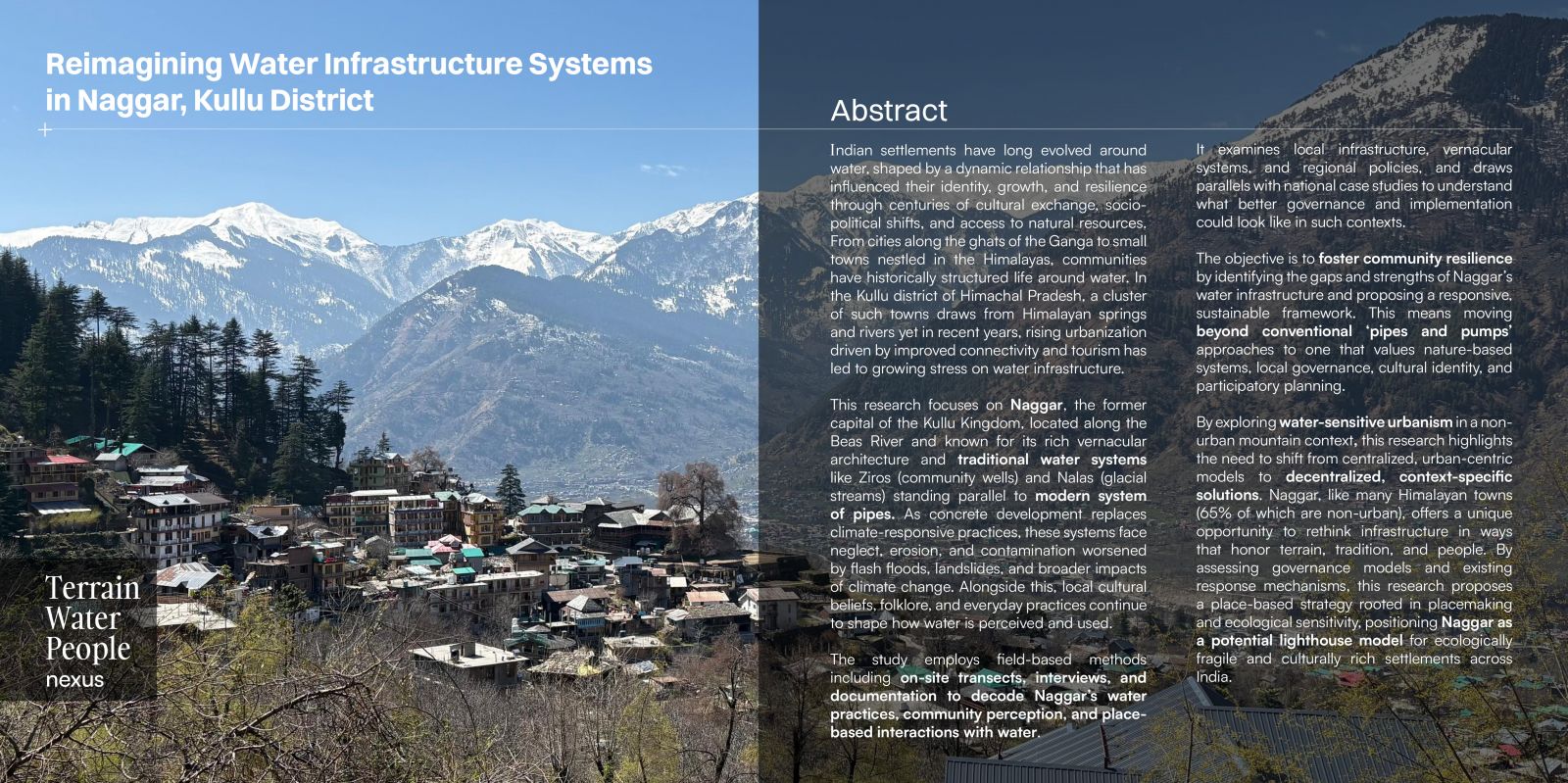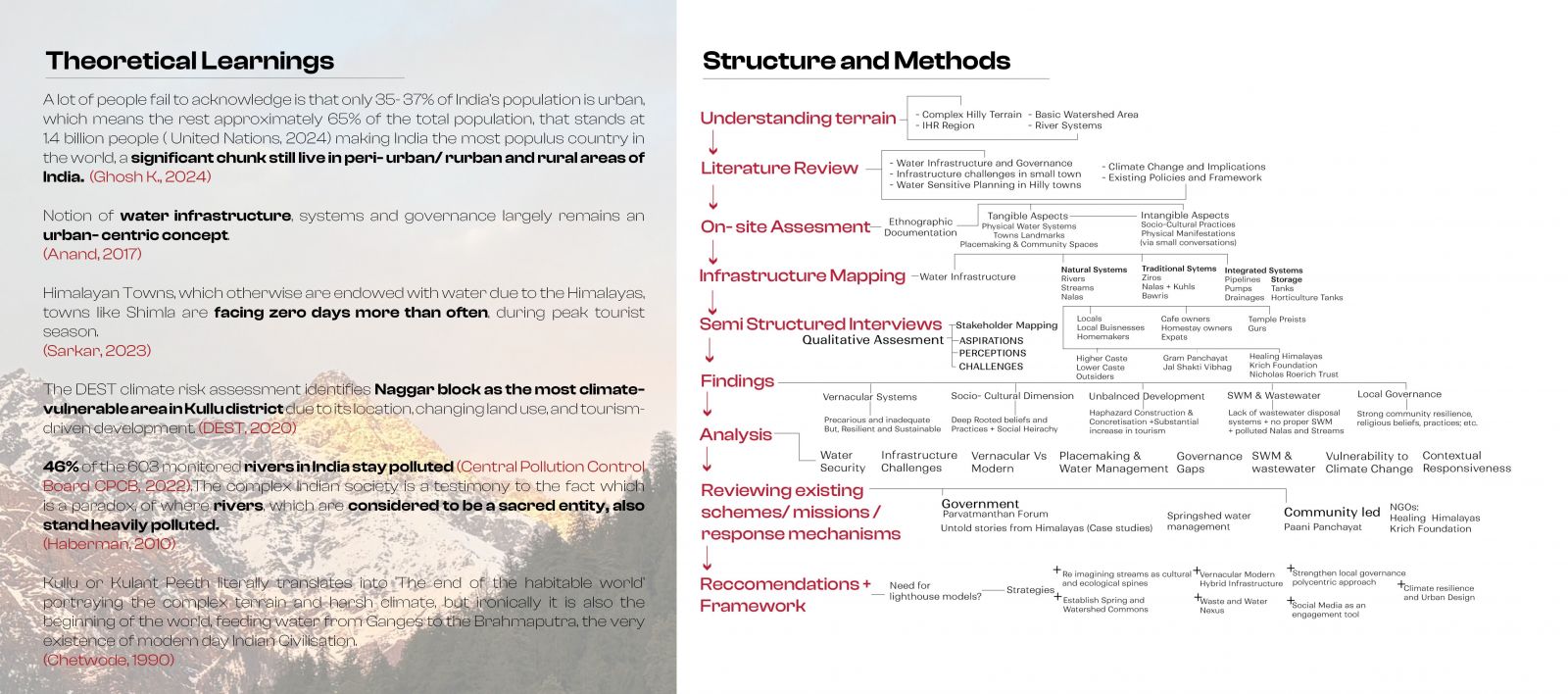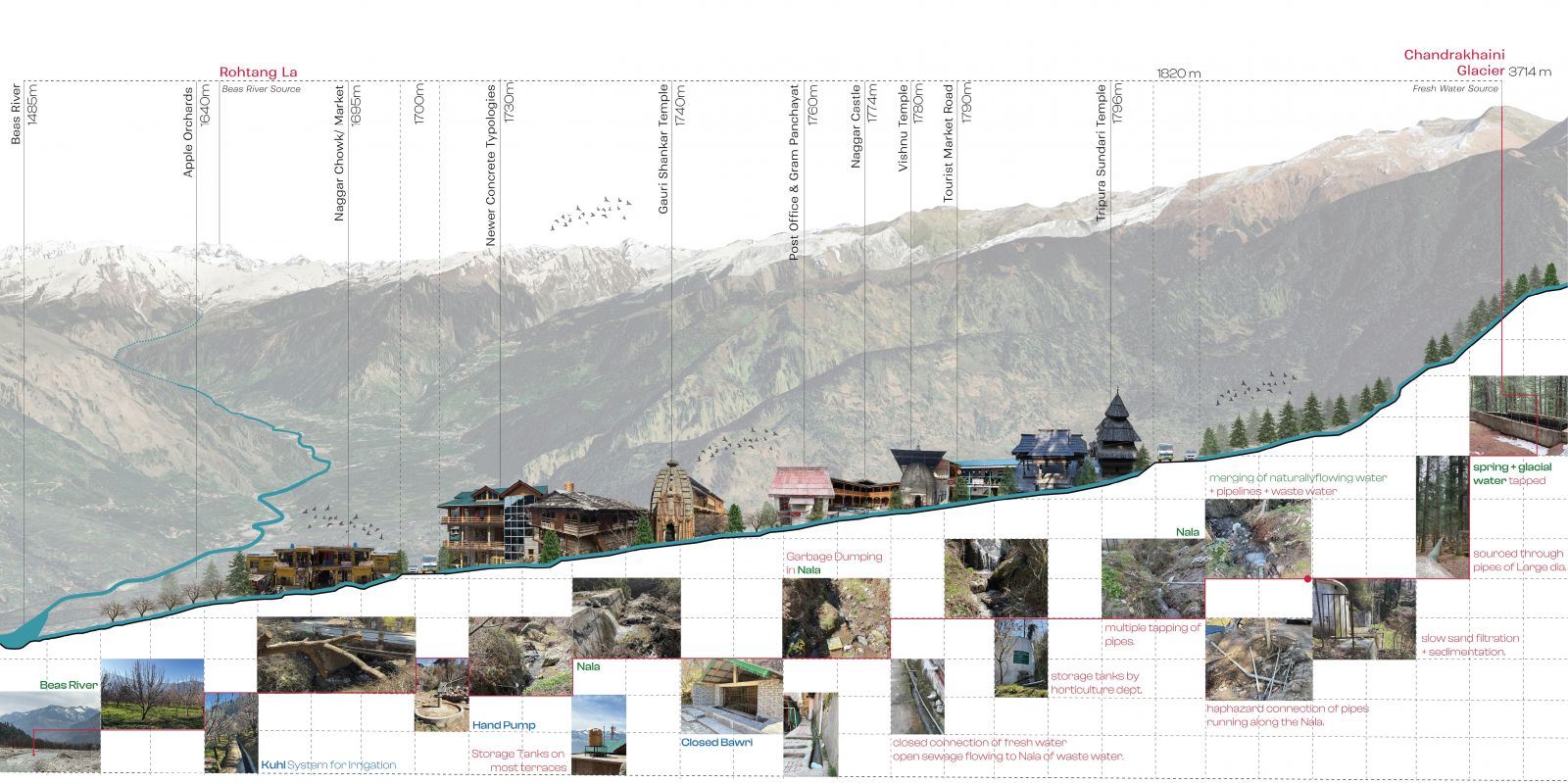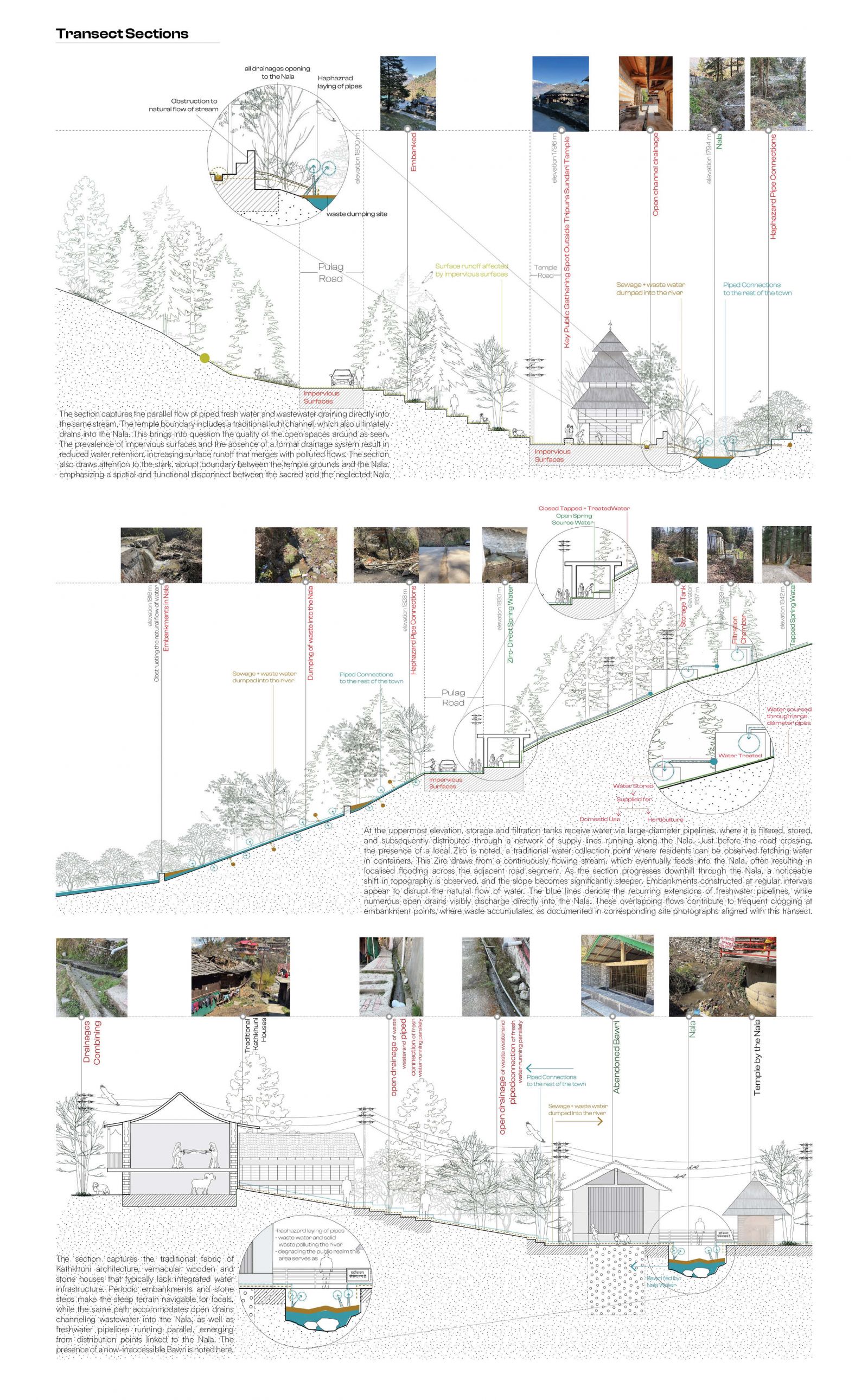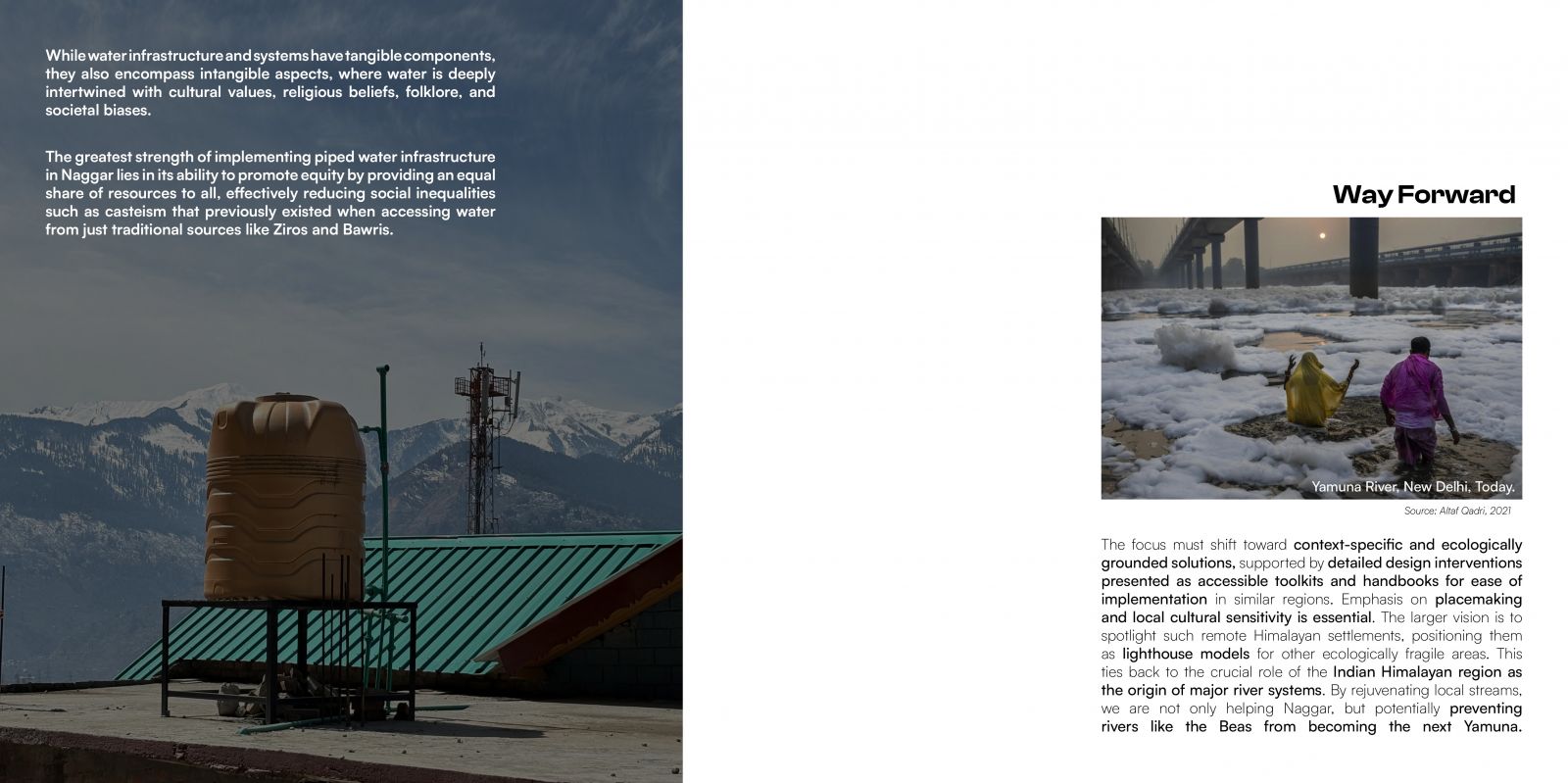Your browser is out-of-date!
For a richer surfing experience on our website, please update your browser. Update my browser now!
For a richer surfing experience on our website, please update your browser. Update my browser now!
This research explores water-sensitive planning and infrastructure in Naggar, in Himachal Pradesh. By examining the long-standing vernacular systems and indigenous practices around water and how they stand integrated with modern infrastructure. The study delves into the region’s complex terrain, aiming to go beyond the tangible and decode the interplay between socio-cultural practices, the physical manifestations of water, and local governance the local fabric embodies. It addresses the escalating challenges of water management in the context of increased climate change, placemaking around water, and the compounding effects of inadequate solid waste and wastewater management. Naggar, like 65% of similar settlements, is not urban in nature, underscoring the need to move away from urban-centric models of water infrastructure, planning, and governance towards decentralized, context-specific approaches. This study analyzes existing schemes and response mechanisms, examines their governance structures, and proposes a series of recommendations grounded in placemaking and sensitive to both the local fabric and water management needs of Naggar. The broader aim is to position Naggar as a lighthouse model for other ecologically and culturally similar regions.
View Additional Work